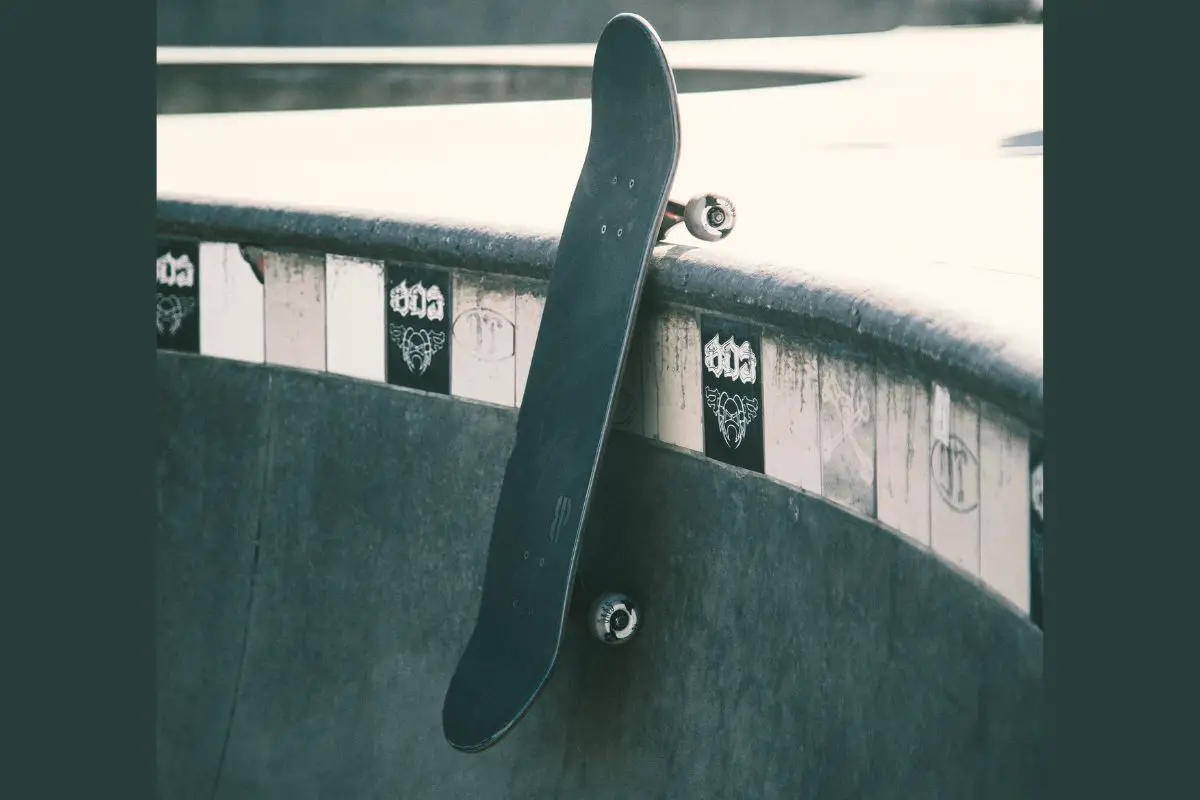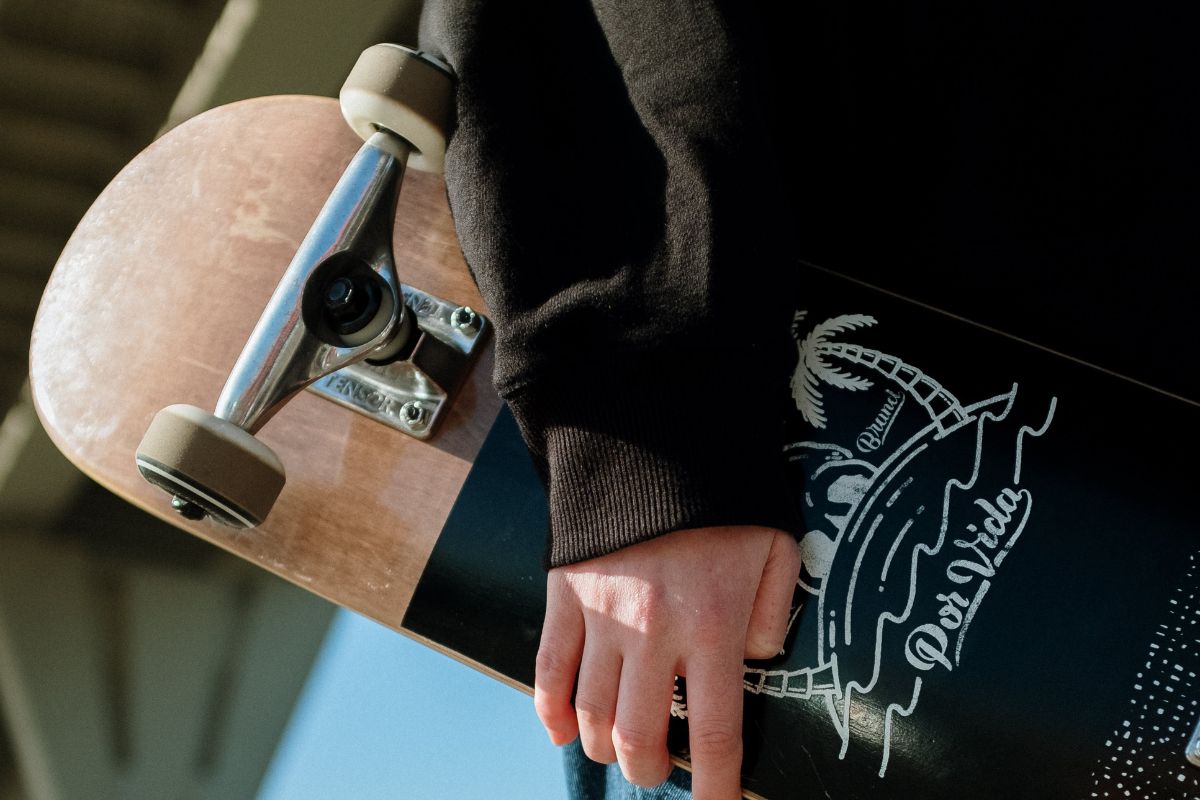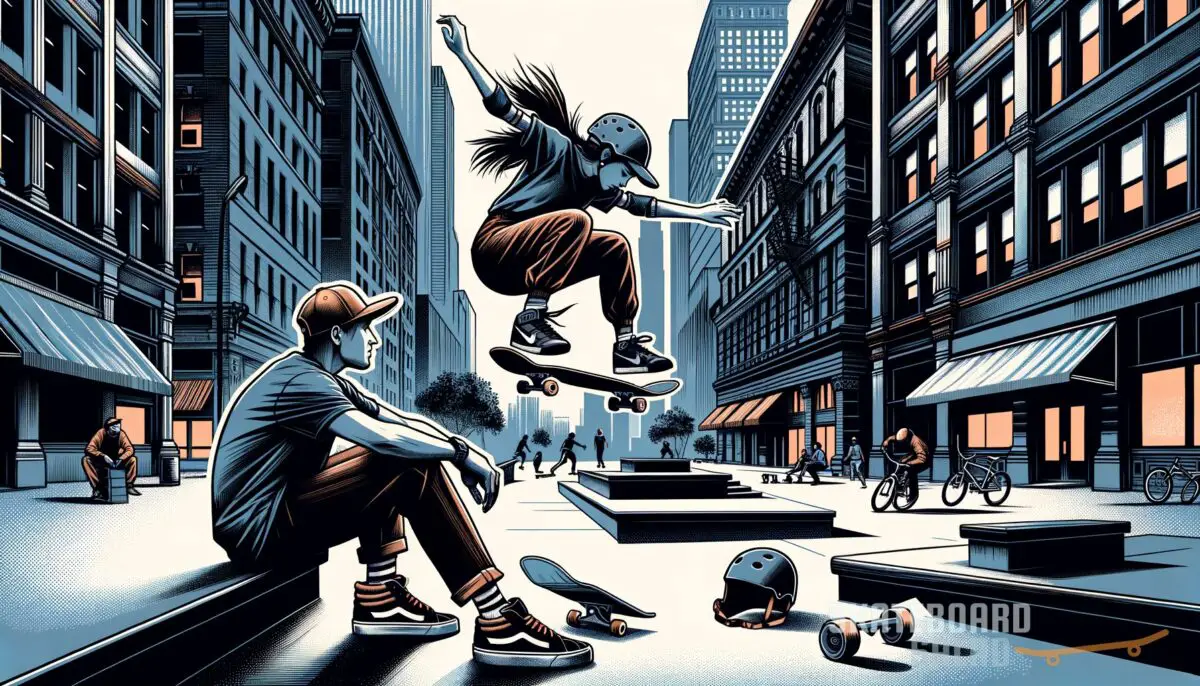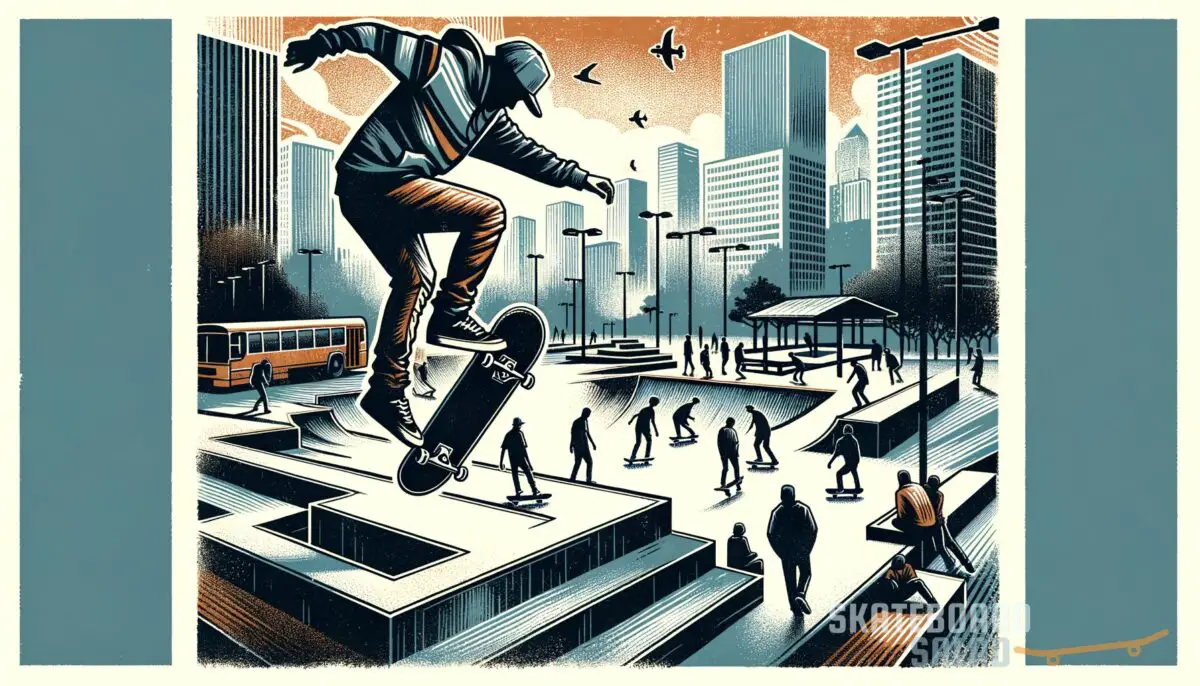Do you have questions on how to grind your first move into the skateboarding universe? Kick back; you’re in the right place! Futures can be kickflipped, tweaked, and shaped by our choices. So, when choosing your first ride, there’s no room for sketchy setups. We will dive into the world of skateboarding to help you pick the best skateboard setup for beginners. From the right deck size to the finest grip tapes, we’ll get you sorted. In the end, you’ll have a clear path to shred the streets or pump through the parks on a ride that you’ll adore. Ready? Let’s drop in!
What to look for when making a good skateboard
First off, let’s define what makes a killer beginner skateboard setup. What’s the recipe for those smooth grinds and killer ollies? Here are the must-haves for any newcomer’s quiver:

- Deck: Aim for a premium deck between 8.0 and 8.25 inches, preferably single-pressed from a reputable woodshop. Brands like WKND, Flip, or Powell are solid choices.
- Wheels: Depending on what you’re after—street, park, or vert—pick wheels between 50mm and 54mm, with a hardness between 96A and 99A. From Spitfire to Mini Logo, there are plenty of sick brands to consider.
- Trucks: Make sure your trucks match your deck’s width. Top-quality trucks by Independent, Thunder, and Venture can last you years and are worth the investment.
Enjoi Whitey Panda Complete Skateboard

Enjoi Whitey Panda Complete Skateboard
Why is it important to have a proper skateboard setup?
Crafting the perfect skateboard setup for beginners balances comfort, control, and safety. Each component, from decks to bearings and wheels, plays a vital role in the ride experience. But why the fuss, you might ask?
Well, as a beginner, you’re on a journey to discover your skate style, from cruising around town to flaunting tricks at the local skate park. Having a skateboard setup that complements your abilities not only makes learning more fun but also boosts your progression. So here are the essentials:
What are the crucial components of the best skateboard setup for beginners?
Assembling the perfect skateboard setup for beginners isn’t about unthinkingly following the half-pipe herd. It’s about identifying your ride style, sizing up the necessary components, and then creating a ride that breeds confidence and stokes progression. Let’s dive into ten key components of an outstanding skate setup for fresh shredders.
1. A quality deck
First on your list should be a deck that perfectly suits your needs and personal style. A quality maple deck, single-pressed from a reputed woodshop, is what you should be aiming for. Typically, the best size for a beginner’s deck is between 8.0 and 8.25 inches. This site provides the perfect balance, both for mastering basic tricks and for carving around on the streets.
Now, why does this hold the top spot? A great deck acts as the main canvas for your skate art. It’s the platform where your feet land those ollies and pull-off kickflips. With brands like Thank You, Creature, and Plan B crafting decks from reputable wood shops, you’re sure to find a deck that matches your style and skill level.
2. Trucks that match your deck’s width
Second on this list are the trucks, often the unsung heroes of any skateboard setup. Quality trucks that match your deck’s width ensure that you get optimal turning and stability on your rides. Trucks like Independent, Tensor, and Venture are widely appreciated in the skating community for their durability and ride quality.
Why are trucks important? Quality trucks dictate how well your skateboard turns. Plus, they’re designed to withstand high impacts—think grinding down stair rails or dropping in on a half pipe. Since they last for years, it’s okay to invest a little more in quality trucks while compromising a little elsewhere in your gear.
3. Wheels according to your skateboarding style
The choice of wheels largely depends on your skateboarding style. For street skating, wheels between 50mm and 54mm, with a hardness between 96A and 99A, are typically optimal. These offer sufficient balance and smooth rides for beginners. Brands like Spitfire, Mini Logo, or Orbs Specter offer beginner-friendly options.
Why does wheel choice matter? The size and hardness of your wheels can have a huge impact on the kind of skateboarding you’re planning to do. Get this right, and you’ve got a smooth ride on the streets or grips hard in the park. It’s all about what you dig!
4. Hardware and tools for assembly
Don’t forget the nuts and bolts. Literally! Part of your skate setup should include eight 1-inch Philips or Allen bolts for assembly. A skate tool is also a great ‘nice-to-have’ for maintenance and tweaks on the go.
While these might sound too obvious to make the list, these are the things that hold your skateboard together. You don’t want to be that guy walking home because a wheel fell off mid-session. Always ensure you have good-quality, durable hardware that won’t disappoint you.
5. Grip tape
This often-overlooked element allows you to control your skateboard better, making for improved rides and quicker skill progression. Grip tapes may not sound as exciting as the other parts, but they are essential in keeping you solidly locked onto your board. Most skate shops will provide grip tape for free with a new deck, but it’s always a good idea to know how to apply it yourself.
6. Bearings
Bearings may seem inconsequential, but they are crucial to how your skateboard rolls. Generally, affordable bearings like Bones Reds will get the job done for beginners.
Bearings help your wheels spin effortlessly. Without them, you’re looking at a static set of wheels—not the most fun to skate on. Opt for bearings that balance cost and performance for beginners, as they won’t need the spin of pro-grade versions yet!
7. Riser pads
Riser pads might seem like the underdog, but they can save you from a severe case of ‘wheel’bite’—when your deck scrapes against the wheels, causing a sudden halt. It is particularly beneficial for setups with larger, softer wheels!
Riser pads work as buffer zones, preventing those sudden halts that cause many skateboard-related accidents. They’re not always a necessary component, but they’re pretty handy if you’re a heavier rider or love big wheels.
8. Comfortable shoes
Good skate shoes are worth their weight in decks! Specially designed for skaters, they offer the right balance of grip, board feel, and durability. Some top picks for beginners include Vans, DC, and Adidas.
Skate shoes add a crucial ‘human touch’ to your skating experience. They will directly impact your control over the board, so choosing a comfortable and durable pair is essential. Plus, they add an extra flair to your skate style—a bonus!
9. Safety gear
In ninth place, but by no means less critical, is safety gear. A good helmet and knee and elbow pads will safeguard you against potential falls and bruising. Let’s be real: all skateboarders fall; beginners may fall more than most.
Beginners are prone to making mistakes and unexpected spills. Good gear helps cushion those falls, making learning less painful and safer. Invest in a solid helmet, knee pads, elbow pads, and even wrist guards to keep the fun rolling and the injuries at bay.
10. A bag for your skateboarding gear
Lastly, a skate bag might not sound like a ‘component,’ but it is surprisingly useful. Having one makes transporting your gear around much easier and more convenient.
A skate bag keeps all your skateboard components and tools organized in one spot. When you’re off to the skate park or a friend’s place, it’s much easier to grab a bag with everything inside than juggle multiple items.

Additional skateboard setup tips
When setting up your first skateboard, a little extra knowledge can go a long way. Here are some additional tips to get you rolling:
- Keep a skate tool handy for quick adjustments
- Test different setups to discover what suits you
- Always keep spare hardware
- Don’t be afraid to ask for help from more advanced skaters.
My experience with setting up my first skateboard
With a distinct love for skateboarding and personal experience, setting up your first skateboard is an adrenaline-filled rollercoaster! The satisfaction of landing your first trick or cruising smoothly down the city streets is something every newcomer should experience.
“Crafting the perfect skateboard setup for beginners is all about balancing comfort, control, and safety. Each component, from decks to bearings and wheels, plays a vital role in the ride experience.”
Remember, the perfect skateboard setup for beginners doesn’t exist in a one-size-fits-all package. It’s all about personal style, just like how every skater has their unique flair. My piece of advice for all you soon-to-be shredders? Don’t shy away from trying different setups and components until you find your sweet spot! And if you’re into the vert scene, this guide helped me a ton. Happy skating!
To help you pinpoint your starting setup, here’s a snapshot of the optimal skateboard components for beginners highlighted in a data table:
| Skateboard Components | Size/Type | Why It Matters |
|---|---|---|
| Deck | 8.0 – 8.25 inches | Provides balance for basic tricks |
| Wheels | 50 – 54mm with 96A – 99A hardness | Ensures smooth rides on streets and parks |
| Trucks | Match width with the deck | Allows for optimal turning and stability |
| Bearings | Cost-effective brands | Enable wheels to roll smoothly |
| Grip Tape | Most skate shops provide free | Enhances control over the board |
| Safety Gear | Helmet, knee pads, and elbow pads | Assures safety during unexpected falls |
If you are a visual learner, check out the video below from YouTube.
Frequently Asked Questions (FAQ)
In traversing the skateboarding universe, you might have a few burning questions that need answers. Here’s a roundup of a few popular queries that beginners often grapple with while setting up their first skateboard.
Do I need certain shoes for skateboarding?
Absolutely! Skateboarding shoes are crafted with specific features like reinforced stitching, flat soles, and extra padding to provide better grip, comfort, and durability. Wearing the right shoes can significantly enhance your board control and skateboarding experience. Check out our blog post on how proper footwear can make skateboarding much easier and safer.
Should I opt for hard or soft wheels?
The hardness of your skateboard wheels should be chosen based on the style of skateboarding you wish to do. For street skating, harder wheels (with a durometer of 96A–99A) are typically preferred, while softer wheels (70A–92A) are great for cruising and maneuvering rougher surfaces. Dive into this comprehensive guide on hard vs. soft wheels to understand this better.
How often should I replace my skateboard components?
This largely depends on how frequently and aggressively you skate. As a thumb rule, decks should be replaced every 6–12 months, wheels every 1-2 years, and trucks can easily last over five years. The bottom line is that if a component hinders your performance or safety, it’s time for an upgrade.
Final thoughts
Choosing the best skateboard setup for beginners isn’t about spending much money or choosing the most popular brands. It’s about finding the components that work best for you when mastering the art of skateboarding. Ready to get started with transition skateboarding? Make sure you check out this definitive guide.
What’s your take on the importance of customizing your skateboard setup as a beginner? And did I cover everything you wanted to know? Let me know in the comments section below. I read and reply to every comment. If you found this article helpful, share it with a skate buddy. Check out my full blog for more tips and tricks about skateboarding. Thanks for reading, and keep shredding!
Key takeaways
This article focuses on the essential components for the best skateboard setup for beginners. Here are the key takeaways:
- The perfect beginner setup should include a quality deck, suitable wheels, and matching trucks.
- Bearings, riser pads, skate shoes, and safety gear are also crucial for your skate setup.
- Each skateboard component should be picked based on your skating style and preferences.
- Maintaining your skateboard components is important for safety and performance.
- Explore and experiment with different components to find your ideal setup.













